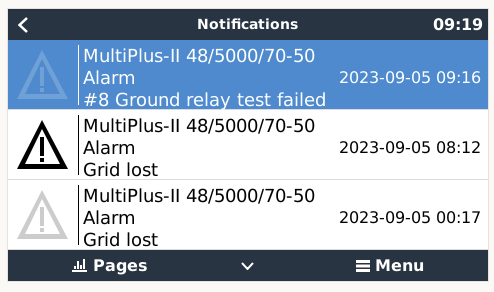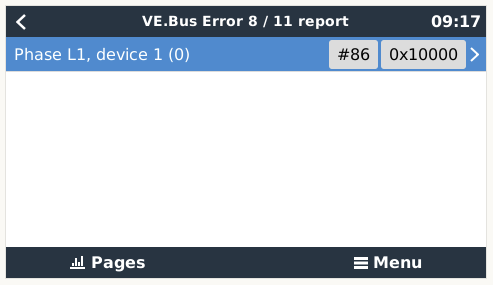Isn’t that what our prezzie says every time he’s unpleasantly surprised by something?
Haha! Indeed. The “shocked” when he says it is a similar euphemism.
Yes, this is clearly quite dangerous.
According to my electrical inspector, EL’s on light circuits is not a requirement to obtain a COC…
In light of the potential danger, why would it not be mandatory, like on plugs circuits?
I don’t know, but when it comes to the safety of my family, a CoC is worth less than the paper it is printed on. A CoC is basically required for selling a house, and making sure your insurer pays out in the event of an electrical fire, say. But a light circuit will shock you just as bad as a plug circuit. It is still just a piece of wire.
A COC is unfortunately worthless…After building our house and obtaining a COC I got the electrical inspectors in…they compiled a 180 page document of faults that had to be fixed…!
Seems to me that the regulation is a bit unbalanced… Inverters must pass all these tests, but a simple EL can be left out on light circuits…maybe there is another reason…
Safety matters include using a bit of common sense.
It can also be dangerous to wander around blind in the dark, more so in specific settings than others.
Weigh the risks up.
The regulation, as it stands, neither dictates nor prevents earth leakage from being used on lights.
My question was why it is not mandatory to have an EL on light circuits…
I can’t really comment on the common sense and nocturnal risk averseness of the involved electricians and electrical inspectors…
My answer is that in some settings it is more dangerous to be in the dark than the risk of electrocution.
Regulations can recognise that SOME people have common sense.
For example, I consider the risk of losing the lights on stairwells, loft ceilings areas, settings with big crowds that may panic, and old age homes with frail people whilst still keeping plugs protected an acceptable safety compromise.
Whilst I might consider lights in other settings more deserving of earth leakage protection.
outdoors, laundry, swimming pool area etc
If I understand it the reason is that lights are out of reach and cannot easily be touched.
I think that rule was created way back when when you only had 2 choices when buy a light: Those flat round ones that could be used for a fish bowl or those taller ones that look like consol glas jars ![]()
Makes sense. Probably around the time the first lights was installed in Kimberley! ![]()
Even then, it isn’t true for outdoor lights. Personally, for me, the ease of touching something isn’t the main consideration. I’ve seen what my (almost) three year old is capable of doing.
Two answers. The one is that for a new installation… they have to be on the RCD. For an existing compliant installation, you are allowed to keep them where they are.
For a new installation, even the geyser needs to be on its own RCD.
That’s what I heard too. The light fittings are high up. The wall boxes however still has to be earthed of course.
Where it is of the utmost importance to keep the lights on, you will run a TT system. Everything is earthed, but there is no bond with neutral. It takes two earth faults before protection devices do anything.
![]()
I don’t think so. E/L protection can be legally excluded from essential circuits.
And it is back. Right smack during LS.

The Error:


To note:
- Invert was sent in to be checked and tested 100%.
- DB was redone by professionals.
- The system entire was re-mounted and reconnected by professionals.
- Panels was re-checked on the roof.
@plonkster, any idea what this error tells us?
@JacoDeJongh any ideas?
Just replace the freakin inverter under warranty already. It is not worth the time being spent on it.
I see plonk is answering
The inverter was sent to the supplier and was tested extensively for ± a week. They are good.
What I must also add …
The installer did find a faulty earth connection on the roof and replaced a join that was rusted through.
That made no difference.
Is there ANY chance it can be the MPPT?
What if it is not the inverter?
Cause if the 250/85 is not connected to the array like I did before, the inverter is happy.
Like the day the system was re-commissioned late in the afternoon with nearly no sun. Switched on, no problem. The moment the combiner box was switched on for the 250/85, we had the error once … till now.
Let me ask this question:
I just bought a 10-year warranty extension on this inverter, right?
Say I replace the inverter under warranty and the problem returns … what happens to the warranty of the inverter then?
Do I get the warranty/old unit back?
As it can take weeks, like now, months, before it happens again.
Don’t want to be difficult, but I do tend to always get the blerrie fringe cases always.
I don’t know the warranty details, but normally these things work that the remainder of the warranty applies to the new unit. You extended it to ten years, so whatever remains of that ten years applies to the replacement unit. QED.
Thanks @plonkster
Victron is rather FAR ahead of the curve with warranties and customer care by the way.
Cannot say if it is all around, would think each case is unique, but if I replace this 4.x year-old inverter, the remaining 5.x years remain on the new warranty replacement.
Never heard of that EVER happening.
Customer for Life here.
And support … janee … being kind, not giving up, never ever throwing your toys, always being nice … gets one a hell of a long way too.
Special mention to
Victron - @plonkster and Victron support local and international
Of Riaan, who always helps
Of Rob, who always helps
Of @Rautenk who always answers the tough questions throw back at me om earthing.
I’m still trying to find the cause … it all started when the two new MPPTs with 3 more panels were installed
Step 1: Earth the two MPPTs casings … long shot, eliminate that a least.
Happens again …
Step 2: Maybe it is the inverter being too sensi, or the relay may have been damaged … just get a new model with an upgraded more robust relay.
Happens again …
Step 3: Maybe it is a light circuit at certain times when it is wetter and there is LS. Have a circuit in mind actually. Thanks @jlouw for that idea!
Happens again …
Step 4: Then the MPPT/s have an issue. How that can work, bugger knows.
Still happens …
Step 5: The combiner box … no, the panels, throw them in the bin. It is where it started! ![]()